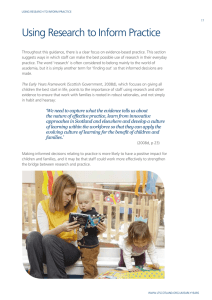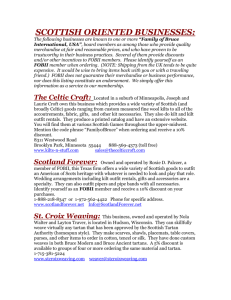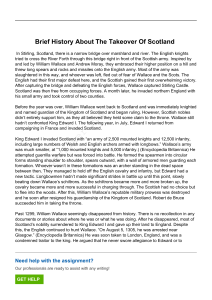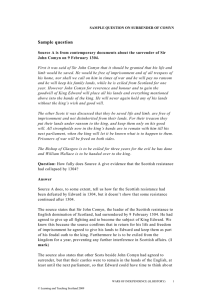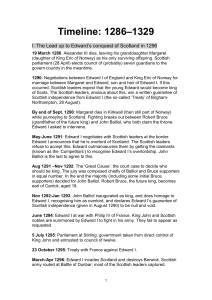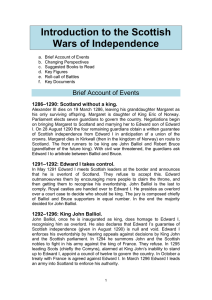How far does Source A demonstrate the strength of Scottish... Edward I in 1297? Use Source A and recalled knowledge.
advertisement
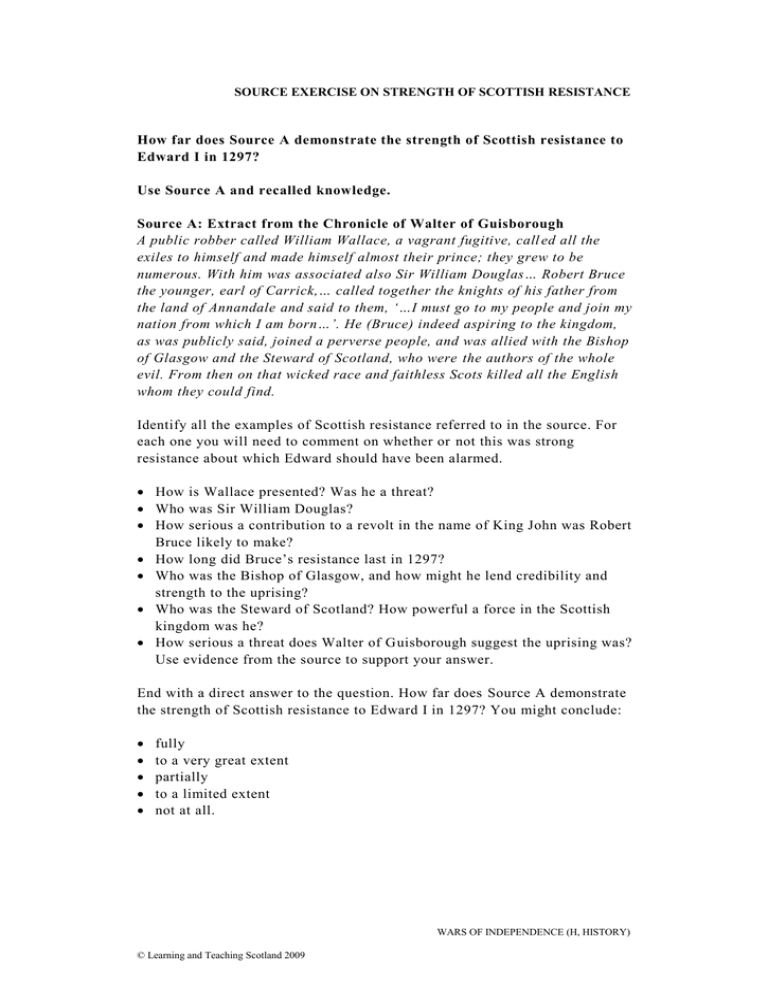
SOURCE EXERCISE ON STRENGTH OF SCOTTISH RESISTANCE How far does Source A demonstrate the strength of Scottish resistance to Edward I in 1297? Use Source A and recalled knowledge. Source A: Extract from the Chronicle of Walter of Guisborough A public robber called William Wallace, a vagrant fugitive, call ed all the exiles to himself and made himself almost their prince; they grew to be numerous. With him was associated also Sir William Douglas… Robert Bruce the younger, earl of Carrick,… called together the knights of his father from the land of Annandale and said to them, ‘…I must go to my people and join my nation from which I am born…’. He (Bruce) indeed aspiring to the kingdom, as was publicly said, joined a perverse people, and was allied with the Bishop of Glasgow and the Steward of Scotland, who were the authors of the whole evil. From then on that wicked race and faithless Scots killed all the English whom they could find. Identify all the examples of Scottish resistance referred to in the source. For each one you will need to comment on whether or not this was strong resistance about which Edward should have been alarmed. How is Wallace presented? Was he a threat? Who was Sir William Douglas? How serious a contribution to a revolt in the name of King John was Robert Bruce likely to make? How long did Bruce’s resistance last in 1297? Who was the Bishop of Glasgow, and how might he lend credibility and strength to the uprising? Who was the Steward of Scotland? How powerful a force in the Scottish kingdom was he? How serious a threat does Walter of Guisborough suggest the uprising was? Use evidence from the source to support your answer. End with a direct answer to the question. How far does Source A demonstrate the strength of Scottish resistance to Edward I in 1297? You might conclude: fully to a very great extent partially to a limited extent not at all. WARS OF INDEPENDENCE (H, HISTORY) © Learning and Teaching Scotland 2009


